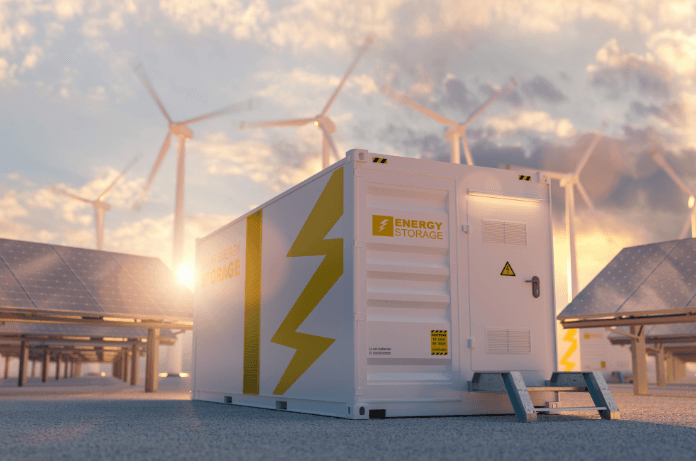Renewable energy sources like solar and wind are essential for a sustainable future. But they come with a significant challenge: How do we store large amounts of renewable energy efficiently, affordably, and sustainably? Until now, existing storage methods have faced issues of cost, efficiency, and scalability. But this is about to change with the ground-breaking discovery of new TES Material. Let’s explore the groundbreaking possibilities.
In a study published in Nature, researchers from Monash University have made a breakthrough in energy storage technology that could significantly advance the global shift away from fossil fuels. Dr. Karolina Matuszek from the Monash University School of Chemistry has led the research of incredible discovery – a new thermal energy storage (TES) material that integrates three distinct forms of energy storage into a single system. This “trimodal” system is a game-changer, storing thermal energy effectively with unmatched efficiency.
“This material represents a major leap forward in thermal energy storage,” says Dr. Matuszek. “By integrating three distinct forms of energy storage into one material, we’ve achieved a level of efficiency and performance that was previously unattainable.”
How Does This Breakthrough – TES Material Work?
The key to this innovation lies in the material’s composition and how it stores energy. The material is a mixture of boric acid and succinic acid, which undergo a phase transition at about 150°C. During this process, the material stores energy through three mechanisms:
- Sensible Heat Storage: As the material warms up, it stores thermal energy in the form of sensible heat.
- Phase Change Storage: When the material melts, the boric acid undergoes a chemical reaction that stores additional energy.
- Thermochemical Storage: The chemical reaction is highly reversible, allowing the material to store and release energy repeatedly without degrading.
This combination allows the TES material to store an incredible 600 MJ per m³ of energy, nearly twice the capacity of many existing materials. This efficiency opens up new possibilities for renewable energy storage and makes it far more reliable and sustainable.
Carnot Batteries: The Future of Energy Storage
The potential applications of this material are vast, but one of the most promising is in Carnot batteries. A Carnot battery works by converting electrical energy into thermal energy for storage and then back into electricity when needed. This new TES material serves as a key component in these batteries, offering incredible stability and performance over 1,000 heating and cooling cycles.

Dr. Matuszek explains, “The ability of this material to function so effectively in Carnot batteries could transform how we store renewable energy. It’s not just about storing energy it’s about doing so in a way that is scalable, sustainable, and cost-effective.”
Trimodal TES Material: Sustainability and Cost-Effectiveness
One of the most exciting aspects of this new material is its sustainability. Both boric acid and succinic acid are inexpensive and environmentally friendly.
- Boric acid is derived from boron ores and is commonly used as a flame retardant.
- Succinic acid is a bio-based chemical, making it a renewable resource.
This makes the material a cost-effective alternative to lithium-ion batteries, which rely on scarce and expensive metals. Additionally, the environmental impact is significantly reduced, aligning with the global push toward greener energy solutions.
The Global Impact of Energy Storage Innovations
The Monash University discovery is a global game-changer. Energy storage has long been the missing link in the transition to renewable power. By addressing the challenge of storing large amounts of energy sustainably, this breakthrough could help countries worldwide reduce their carbon footprints and achieve their climate goals.
Dr. Matuszek captures the significance perfectly: “If we can store energy more effectively, we make renewable energy more reliable and that brings us closer to a sustainable, decarbonized future.”
Looking Ahead: The Next Steps
Brittany Harvison, a UCF physics doctoral student involved in energy research, believes there’s still much to uncover. “Now that we have general information about the identified compositional groups, we have much more to explore and discover.”
This discovery is just the beginning. As researchers continue to explore the potential of this TES material, the possibilities are endless. From enhancing solar power plants to supporting grid-scale energy storage, the applications are vast and transformative.

